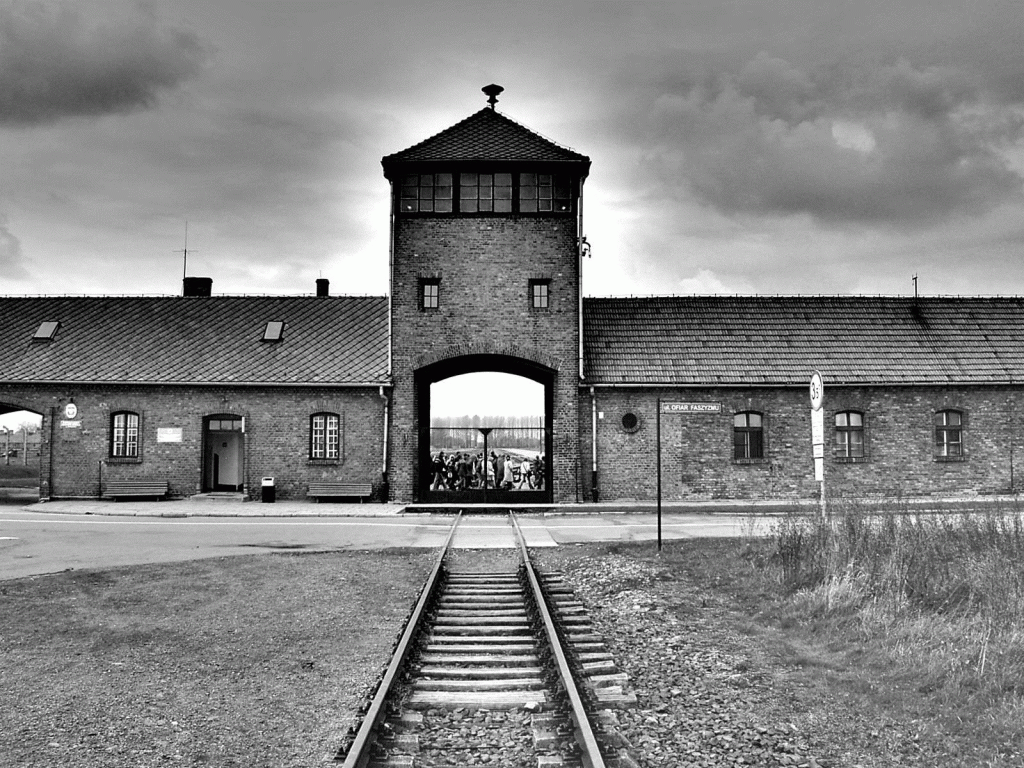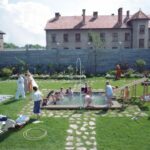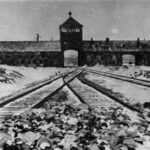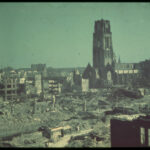Blog Post
Flowers at Auschwitz
By Jonathon Van Maren
This week marks the 71st anniversary of the liberation of Auschwitz, the sprawling Nazi death camp tucked into the Polish countryside near a nondescript village called Oświęcim. The very name now carries with it a weighty darkness, as if the millions of souls sent off in excruciating horror to eternity somehow linger in accusation to ensure that the words will never again be meaningless.
Everyone should have to witness this place.
I visited Auschwitz on a sunny summer day in 2009, and found it almost impossible to truly comprehend what had happened there. There were bright yellow flowers poking up around the empty wooden barracks and squeezing through the gravel of the infamous railroad tracks, so similar in hue to the yellow star that many of the condemned had arrived wearing. The grass was a lovely green, and the buzzing of insects was interrupted only by the cheery noise of flitting birds. In my mind’s eye, this place had been one of gray and muck and ash and horror. This, I hadn’t expected.
The horrors mostly lay indoors. There were claw marks on the concrete walls of the gas chambers, where the desperate dying had tried in their final moments to escape the poison that filled their lungs. The chambers opened up into a large, cavernous room where ovens stood open. They had once blazed with flesh-consuming flames—that day, there was only a single candle burning in each of the gaping black mouths.
Outside, a rabbi began a mournful recitation of the Mourner’s Kaddish, a Jewish prayer. He was wrapped in an Israeli flag and leading a group of young people. They looked somber. They, perhaps, had heard from parents and grandparents of what had happened here.
There were small reminders of great good, too. My friends and I looked with awe at the tiny cell in which Maximilian Kolbe, a Polish friar, breathed his last. Arrested for hiding Jews in his monastery, he was sent to the camp by the Gestapo. In July 1941, the commander of Auschwitz decided to starve ten men to death in retribution for the escape of three prisoners. One man, Franciszek Gajowicek, begged for mercy. “My wife! My children!” he pleaded. Maximilian Kolbe stepped forward and offered to die in his stead. For two weeks, Kolbe comforted the starving and dehydrated men around him in the underground bunker as one by one, they slipped away. After two weeks, tired of waiting for him to die, the impatient guards injected Kolbe with carbolic acid.
Franciszek Gajowicek was reunited with his wife after the liberation of Auschwitz.
Stories that highlight the glimmers of good in humanity are treasured simply because they are hard to come by in this place.
It’s always surprising what ends up stunning you the most.
I am of Dutch heritage, on both sides of my family. My father was born in the Netherlands. So were my paternal and maternal grandparents. And that is why I stopped short, stunned, as I was shuffling quietly past the enormous mounds of shoes in Block 5. With a few exceptions poking here and there out of the piles, they all seemed to have faded into the same dull, grayish color. And then, right in front of me, were a tiny pair of Dutch wooden shoes. The petite shoes of a child. Her terrifying journey must have begun in the Netherlands before ending here.
Just a little further on was a heap of decaying, rotting hair. Lying limply on the side of the pile were two tiny braids. I wondered then if the child who had worn the shoes had also worn the little braids, before everything was taken from her by the rough adult killers who had awaited her arrival.
There is only one other place I have ever been where the darkness of the child-murders of the Holocaust is as suffocating. That is the Children’s Memorial in Yad Vashem, Israel.
It’s a pitch-black passageway. There are a few candles burning here and there, but mirrors are positioned so that all you see is candles burning in the black as far as the eye can see. Over a million of them, representing the 1.5 million children murdered in the Shoah. And overhead, in Hebrew, Yiddish, and English, a disembodied voice reads the names, ages, and nationalities of the children. When you blink too fast, it’s like every one of the candles are winking out, one by one. It just makes you hate humans so much.
But then you leave the passageway, and come out into a sunny garden. The Garden of the Righteous Among the Nations. Each tree bears a plaque memorializing the name of someone who risked his or her life to save Jews from the inferno. And there are so many names there, too, so many names.
Corrie Ten Boom.
Oskar Schindler.
Raoul Wallenberg.
Irene Opdyke.
Maria Andzelm.
Thousands upon thousands of names. And it gives you just a bit of hope again. Because we have a choice, don’t we?
We have a choice.









German camp. German not Nazi as there was no Nazi nation. G-E-R-M-A-N.